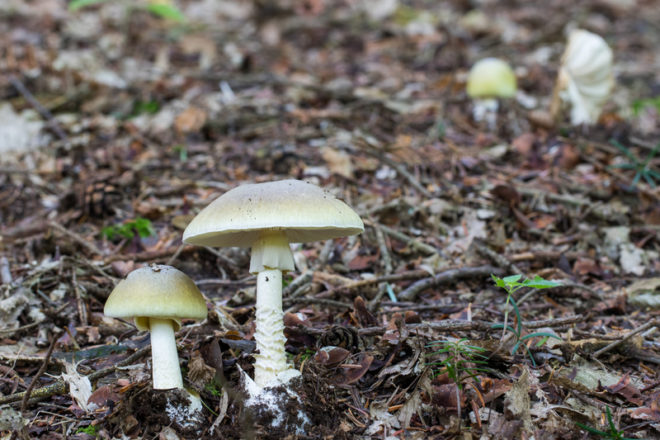
Almost 250 cases of poisonings due to wild mushroom consumption have been reported in France in the past few weeks.
From July to mid-October this year, poison control centers recorded between five and 60 cases a week but 249 poisoning cases have been recorded in recent weeks.
Seven serious cases have been noted since July 2018 and four of them were in the past few weeks.
Poisonings due to eating wild mushrooms in France are reported to the French Poison Control and Monitoring Centers (CAP-TVs).
The sharp increase prompted the French Agency for Food, Environmental and Occupational Health and Safety (ANSES) and the Directorate General for Health (DGS) to issue a warning to wild mushroom gatherers and remind them of good practices.
Although weather conditions in September and the first half of October with dry, high temperatures were not conducive to the growth of wild mushrooms, the cooler and wetter conditions of recent weeks have been more favorable, said the agencies.
ANSES and the DGS said the poisoning cases are regularly observed year after year and in most cases, poisonings result from confusion with other edible mushrooms.
Last year, 181 poisoning cases, with five of a serious nature, were recorded in two weeks of September. In 2016, 87 cases, including three serious, were recorded in October.
Poisoning can have serious health consequences such as severe digestive disorders, liver damage that may require a transplant and can be fatal. Symptoms generally appear within 12 hours of consumption and the patient’s condition may deteriorate rapidly. In the event of symptoms, it is useful to note the time of the last meal and onset of the first symptoms and to keep any leftovers from the harvest for identification.
The Centre Antipoisons in Belgium receives around 400 calls a year involving mushrooms with most between June and September. The foundation Tox Info Suisse identified almost 600 poisonings in Switzerland last year.
Mushroom poisoning worldwide
Earlier this year, more than 1,200 people fell sick, 112 were hospitalized and 19 died in Iran with a link to eating wild mushrooms.
New South Wales (NSW) Health warned against eating wild mushrooms in May after 38 poisoning hospitalizations this year, including 14 children, were reported to the NSW Poisons Information Centre. Between 2014 and 2017, there were 281 hospitalizations from mushroom poisoning in NSW and the Australian Capital Territory.
Last month, the Illinois Poison Center (IPC) also issued a warning about mushrooms.
While many types of toxic mushrooms can be found in Illinois, most are minimally to moderately toxic. In rare cases, they can be poisonous and require hospitalization.
“The Illinois Poison Center receives hundreds of calls each year about mushrooms found in lawns, neighborhood parks and forest preserves. Adults, and especially children, should be aware of the health risks associated with consuming wild mushrooms and what to do if they are ingested,” said Michael Wahl, medical director at the IPC.
One of the main concerns when consuming poisonous mushrooms is liver damage from those that contain amatoxin. Amatoxin-containing mushrooms may not produce symptoms until six to 24 hours after ingestion.
From the start of July to mid-August, 45 mushroom exposure cases (38 in humans) were managed by the medical experts at the New Jersey Poison Control Center.
Diane Calello, NJ Poison Control Center executive and medical director, said even experienced mushroom pickers can be fooled by toxic look-a-likes.
“Don’t be fooled – many edible mushrooms have toxic look-a-likes. The cooking process does not prevent the toxic health effects of some mushrooms. Depending on the type of mushroom, eating even a few bites can cause serious health concerns,” she said.
In December 2016, 14 cases of Amanita phalloides (also known as the “death cap”) poisoning were identified by the California Poison Control System (CPCS) among persons who had consumed foraged wild mushrooms. Three patients received liver transplants and while all recovered, a child had permanent neurologic impairment.
























